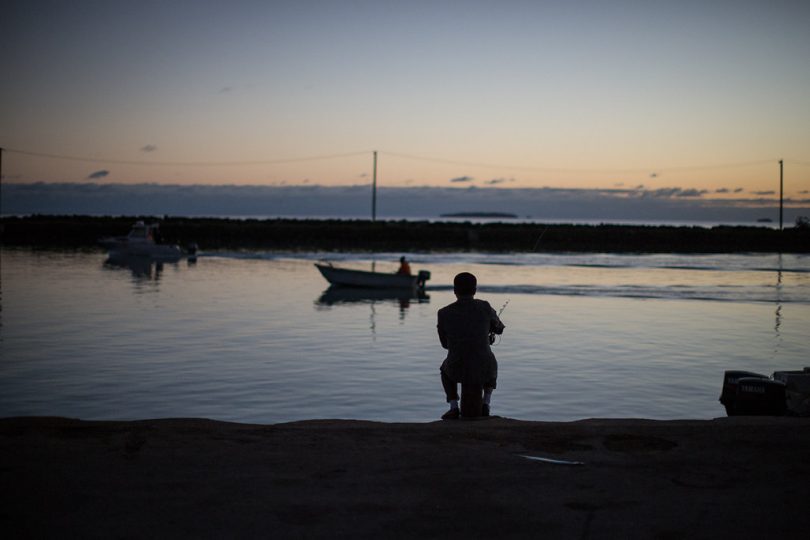As noted in my August article, titled Quarantine requirement for NZ seasonal workers removed: implications for Australia, since the restart of Australia’s Seasonal Worker Programme (SWP) and Pacific Labour Scheme (PLS) in September 2020, some 6798 SWP workers and 2731 PLS workers have arrived in Australia to end July 2021.
The figure below compares the share of arrivals from the main sending countries for both SWP and PLS workers for two periods – the 12 months to end January 2020 and 11 months to end July 2021.
The orange bar shows a country’s share of arrivals since the restart.
The blue bar shows the pre-COVID sending country’s share.
Vanuatu’s share of both SWP and PLS workers has decreased from 43 per cent in the immediate pre-COVID period to 39 per cent since the restart.
Tonga, also a major sending country, has seen its share fall from 26 per cent pre-COVID to 23 per cent.
The countries that have increased their share in the restart period are Solomon Islands (from 3 per cent to 13 per cent), Samoa (from 7 per cent to 13 per cent) and Fiji (from 4 per cent to 7 per cent).
Timor-Leste has been the biggest loser as a sending country (from 13 per cent to 2 per cent). Kiribati has a slightly lower share of its already low share (3 per cent to 2 per cent).
Timor-Leste has only experienced modest COVID-19 outbreaks (according to WHO data, its mortality rate of 2.12 per 100,000 compares with Australia’s 3.67 per 100,000).

However, its land border with Indonesia is deemed a major risk factor.
The fall in Vanuatu’s share may be to do with SWP employers seeking new workers from other countries, perhaps due to an over-reliance in the past on Vanuatu as the major source country.
Despite zero COVID-19 cases, Tonga’s declining share of SWP workers is due in large part to a state-level decision to ban Tonga sending workers to Tasmania, and hence to Victoria.
As Tasmania provides SWP quarantine facilities for Victoria as well, approved employers in both states cannot employ workers from the second largest SWP sending country.
A Pacific Beat report on August 23 indicated that the Commonwealth Health Department reclassified the country ‘red zone’ in March, after it was assessed on its COVID-19 preparedness.
There were two intakes of 300 Tongan SWP workers to Tasmania without incident since the resumption of the SWP in September 2020; the most recent intake was in January 2021. Several problems can be identified with Tasmania’s ban on Tongan workers.
One is that no other state or territory has banned Tongan SWP workers.
This is shown by the fact that between April 1 and June 30, 2021 some 901 SWP Tongan workers arrived to work in other Australian states, according to the Department of Home Affairs statistics on temporary entrants.
This is confirmed by the Tonga liaison officer in Australia.
The next harvest season for Tasmania will start in November and go through to April.
This means that SWP approved employers should have started by the end of August the extended process required by both the Australian and Tongan authorities to ensure that workers arrived on time.
No public announcement is available to confirm the ban, either on the website of the Tasmania Department of Health or the Tasmanian government coronavirus website.
Despite formal requests for the reasons, no explanation has been provided to the Tongan High Commission or to the Ministry of Health in Tonga.
In her August 4th article, titled New Zealand’s RSE scheme: struggling against COVID Charlotte Bedford discussed sending country access to New Zealand’s Recognised Seasonal Employer (RSE) program where workers from Tonga, Samoa and Vanuatu would be able to bypass expensive managed isolation and quarantine requirements to start work directly after they arrive.
I have argued previously that Australia and its states should follow New Zealand’s example. In that regard, I note a new report by University of Melbourne public health specialists that uses modelling of potential infection rates from high- and low-risk countries to show that Australia “can already safely and strategically open or relax borders (sic) restrictions with select low-risk countries.”
The report argues that by utilising tools, such as pre-departure testing and vaccination, in the lowrisk sending countries, Australia “could now safely accept arrivals without hotel quarantine from some selected low-risk countries”.
Whether or not that shift happens, it is obviously important that decisions about international borders be made transparently, especially when they are made at the state level.
The Tongan High Commission has not been informed of the reasons for the ban and the changes needed to have the ban lifted.
There are many questions to be answered.
A different, more transparent approach is needed. When federal or state public health officials make decisions without explanation, which have a major effect on our sovereign neighbours, surely our national interests are being harmed.
Disclosure: This research was undertaken with support from the Pacific Research Program, funded by the Department of Foreign Affairs and Trade. The views are those of the author only.
- DR RICHARD CURTAIN is a Research Fellow with the Development Policy Centre. The views expressed by him are not necessarily shared by this newspaper. This article appeared first on Devpolicy Blog (devpolicy.org), from the Development Policy Centre at The Australian National University.




